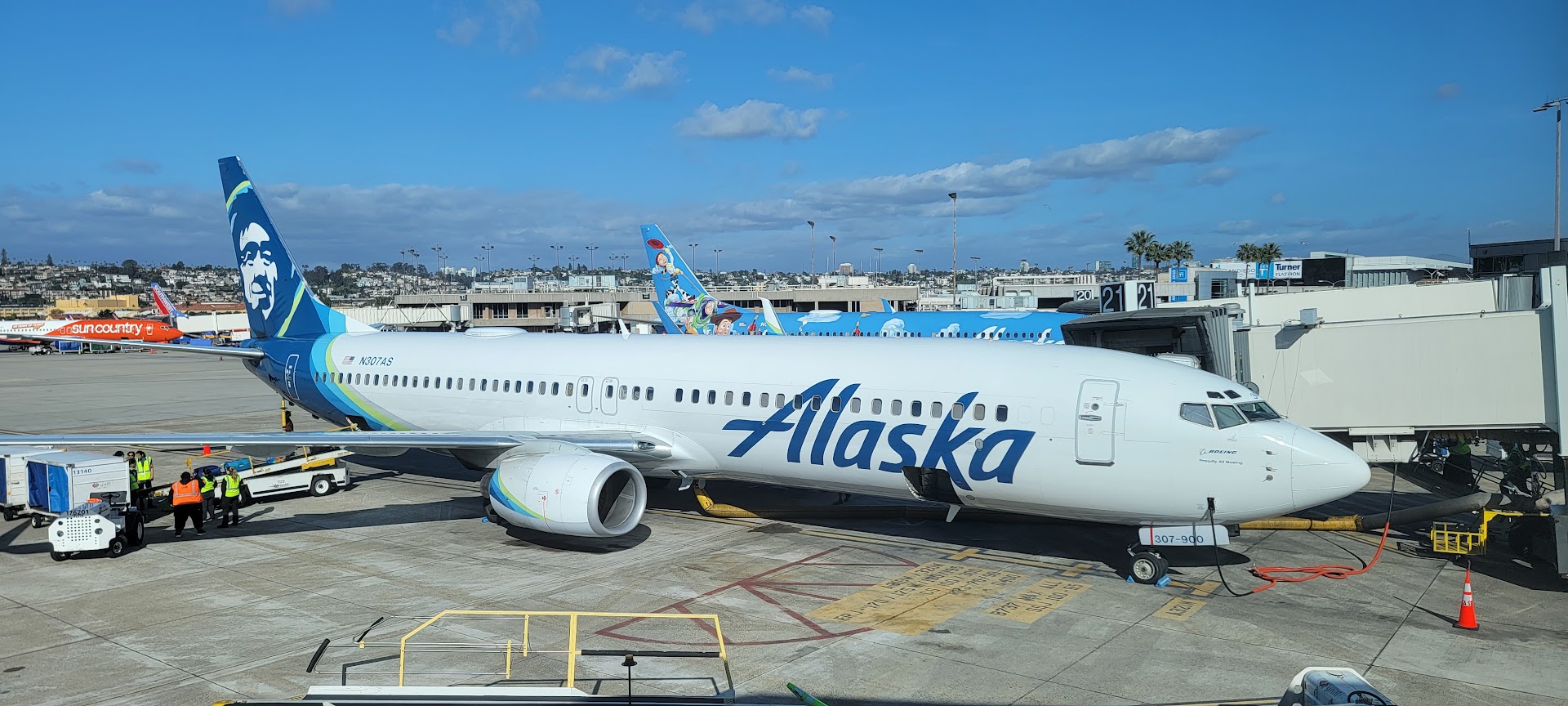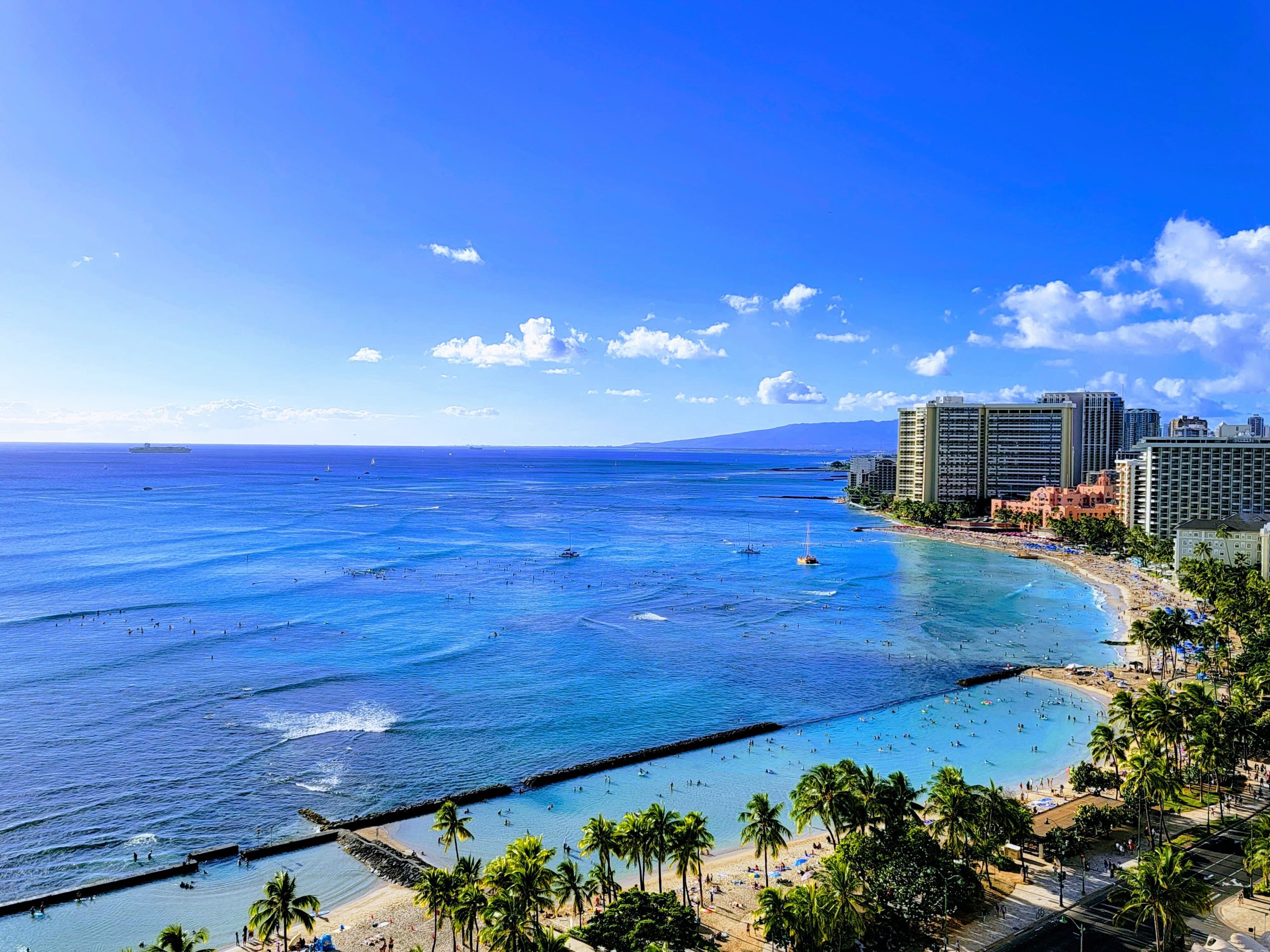The Department of Justice didn’t oppose Alaska Airlines buying Hawaiian. That meant the Department of Transportation would allow it, but it was clear they were going to require specific concessions. That’s all happened. Alaska can now close the transaction to acquire Hawaiian Airlines.
- This is an incredible deal for Hawaiian shareholders.
- It’s a pretty good deal on net for Hawaiian’s customers, although they could see fewer long haul services from Honolulu in the future (which might have happened anyway – Hawaiian was a financially weak carrier).
- It’s of questionable value to Alaska, which will acquire an incompatible fleet and experience in long haul operations.

In introducing conditions that the Department of Transportation was extracting from Alaska in exchange for approval, Transportation Secretary Pete Buttigieg referred to the “BIden-Harris” administration, underscoring that this is very much political and part of a campaign of middle class pocketbook issues.
- Maintain service levels where Alaska and Hawaiian compete, but there are plenty of exceptions and loopholes.
Ultimately there are a handful of West Coast – Hawaii markets that both airlines serve. Today United is the biggest carrier between the mainland and Hawaii, and Delta, American and Southwest are all big players. There’s no lack of competition on vacation routes to Hawaii, and few barriers to entry. This is just not a real competition concern.
- Commit to current intra-Hawaii flights. This means continuing losses for Southwest Airlines. If Alaska could cut seats on some of these routes, it might be sustainable for Southwest to continue to compete. But since Alaska won’t be allowed to cut back, maybe Southwest will? The irony then is that this could eliminate much intra-island competition.
- Keep interline agreements, which is something United wanted. United can fly their own planes between the islands, but they’d rather sell space on their flights to Hawaii and then flight segments on Hawaiian. This, too, may ultimately limit competition. Once Hawaiian and Alaska do merge onto a single operating certificate it will be interesting to see whether the interline is limited to legacy Hawaiian Airlines routes or systemwide.
- Miles must transfer from Hawaiian to Alaska at a 1:1 ratio. This was always going to happen anyway. They are also requiring that they do not devalue miles, status or benefits earned through either program. This is largely posturing.
- Require that Hawaiian Airlines adopt the more consumer-friendly customer protections that are in place on Alaska, including free guaranteed family seat assignments and flight delay and cancellation compensation. They will also reduce the cost of checked bag fees and change fees for active duty military and their families while traveling on orders. These are minor items to Alaska in the context of getting the deal done, and are small ball pickups that the Administration can claim victory over.

One Mile at a Time “impressed by how thoughtful and reasonable these requirements are from the DOT.” I’m surprised by how petty and milquetoast some of them are.
They wanted to put teeth into the intra-Hawaii service guarantees. That’s the only piece of this that really matters, although it could wind up backfiring depending on Southwest’s competitive response. Beyond that are several taxes on the deal, but I wonder whether DOT got the right things.
No expiration of miles? That may or may not be the right business policy, but it shifts program spending from savvy frequent customers to infrequent ones. Family seating guarantees on Hawaiian flights as a condition of the deal? That would happen once they’re ultimately on the same operating certificate anyway.

As Alaska says, “these commitments do not impact the synergies of the deal.” They are either the things Alaska was already on board with to begin with, and was going to do anyway, or are immaterial.
It’s the final green light, though, to go for Hawaiian Airlines miles either as a transfer partner or via new credit cards, with a far firmer footing that those points will eventually become Alaska miles. And don’t forget that Hawaiian co-brand credit card customers can transfer points between accounts for free, so get your friends and family to sign up too… move the miles into your Hawaiian account… and they will eventually be your Alaska miles.


Hold your hats. Here comes the Windag to spew his nonsense.
My Hawaiian SUB miles have already posted, my little gamble is going well
This puts me over the Million mile mark for SUB this year. I’m good
The miles pooling is great for those who can take advantage Especially needing 250,000 for StarLux Bizz 😉
“It’s of questionable value to Alaska, which will acquire an incompatible fleet and experience in long haul operations.”
Similar was said for the Virgin acquisition. How can AS continue these practices?
Nothing was stated with regards to existing code share and partner relationships Hawaiian Airlines has with other carriers, such as United. Currently, you can book a United itinerary (either paid or with “miles” to one destination, let’s say Honolulu, return from another destination, let’s say Maui, and the one island hop segment on Hawaiian is included (for mileage redemptions, it is free).
Prior to this apparent approval, United did bring this up with the DOJ.
I have read nothing about the merged Alaska/Hawaiian airline being forced to maintain these relationships. In that case, it is definitely a competitive disadvantage to United and its passengers.
@DI – Alaska will be required to retain Hawaiian’s *interline* agreements “on terms and conditions no less favorable to the other carrier than the terms” in effect at 9/15/24.
“There is likely to be some sort of requirement that HA considers to codeshare on intra-Hawaii routes with multiple carriers regardless of ownership.
And picking between AA and HA is very likely a choice AS will be forced to make. From AS’ own future, HA just makes more sense and will deliver more financial benefit even if the cost to get that benefit is much harder.”
WAIT. My son was wrong on these conditions?! He’s never wrong!!!
Ah yes, it wouldn’t be a Gary blog without an unfounded political hit job – administrations are referred to by both names all the time.
This deal is materially different from the Virgin America deal. HA’s fleet may be different from AS, but much of the HA fleet are long haul, widebodies that AS has never operated and that have been a missing link for them. As HA is transitioning their primary passenger long haul fleet to the 787, it continues Alaska’a commitment to a Boeing fleet and HA’s A321N experience also allows for AS/HA to potentially use A321XLRs. AS gets significant intra island feed and is now no longer heavily reliant on CA/WA/OR/AS based passengers for their Hawaii flights, but now have feed from the Islands.
Two Good Airlines with Good Folk in both … I truly Hope this works out well for Employees and customers alike.
@MommaDunn: my sympathies for your son, dear. I’m pretty sure he’s still reeling from the shock of this news and frantically looking for ideas on how Delta will defend its self-proclaimed title of ‘Seattle’s largest global airline’. Once he has had the chance to assemble a set of random unrelated facts; I’m sure he will come and post them. By the way, he is bound to be very very upset tonight; so please watch over him, won’t you?!
@Gary – I hope you are right vis-a-vis “interline agreements” which may or may not include code-share or joint itinerary agreements such as Hawaiian has with United. I know that United did file a concern about this with DOJ.
Posters: Your obsession with Tim Dunn is truly boring.
I have both Hawaiian Air Master Card (Barclays), and the BOA Alaska Air Visa. Any ideas what is going to happen to them? Historically, when 2 airlines merge, what has taken place usually with Credit Cards serviced by 2 different banks?
United is the #3 in service between HNL and the US Continent. Hawaiian is #1 with over 45% of the flights. Alaska is #5.
Bottom line is these are the two smaller airlines that prevailed against the much larger competition with a great product and two employee groups that offer, buy and large, better service than the competition. If they merge as adults they have a tremendous amount of potential.
Bravo DOT for reducing these airlines’ ability to screw consumers.
Enough with total deregulation.
Time to get to work on the other airlines, without letting the perfect get in the way of the good.
How can they monitor no devaluation?
AS has already devalued – one way J coast to coast now can be 125 k for a one stop.
But I really hope they don’t increase the updgrade for miles on Hawaiian.
“AILINES” and “BIden” – does no one proof the images and spelling?
Good point about SWA, they simply cannot make money inter island, it was a bad plan from the beginning for many reasons and obviously didn’t work.
By the way Gary, it’s “inter island” not ‘intra island” inter island is flying between islands, intra island is flying in the confines of an island….like KOA to ITO
I’m happy for oneworld customers in that Hawaiian will join this alliance and therefore lots of new routes to Hawaii (and beyond) which is great for AAdvantage members.
I just don’t trust AS. I can see why Hawaiian would look for the financial security of Alaska, but why is Alaska so interested in Hawaiian? Do they want to siphon their wide bodies? Will we see HA become a mostly narrow body airline while AS reassigns their wide bodies to its fleet? I understand that the two airlines will retain their brands but what wasn’t addressed, to my knowledge, was the transfer of equipment between the two. Like what Lorenzo did to Eastern with the Texas Air acquisition.
If there’s one thing Alaska is terrible at- it’s a merger. They absolutely butchered the Virgin acquisition. Paid through the nose and gained nothing- then destroyed everything that made VX desirable in the first place.
Now they’re overpaying for a loss making carrier that operates completely different fleet types and has a completely different structure… I for one can’t wait to watch how this plays out.
“Although it could wind up backfiring depending on Southwest’s competitive response.” I don’t really think so, Southwest’s whole strategy was based on being able to bleed Hawaiian out and their loss making position isn’t sustainable particularly with their current investor attention. Southwest was going to have to stop lighting money on fire there on inter-island regardless, if this accelerates that since they now know Alaska can’t blink, then at least there are service guarantees for the islands.